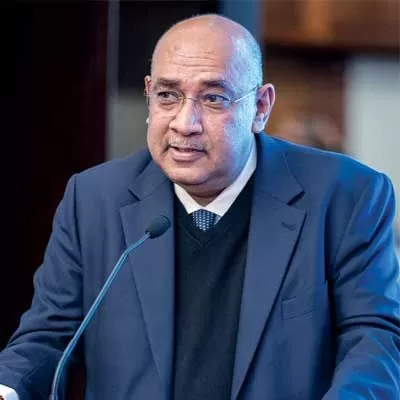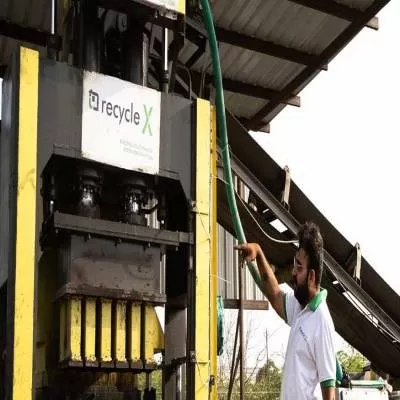- Home
- Infrastructure Urban
- ECONOMY & POLICY
- Local expertise is the key in Tier-II and -III cities
Local expertise is the key in Tier-II and -III cities
With its unwavering focus on quality, optimisation of cost and timely delivery, Neptune Developers has grown considerably within a short span of ten years. Established in 2002, the company has to its credit several state-of-the-art commercial, residential, retail and leisure structures across India. The Mumbai-based company has also lined up and executed several projects in cities like Pune, Vizag, Kochi, Chennai and Nagpur. In the pipeline are plans to build affordable housing. Elaborating on the company's vision, its operations and future plans, Nayan Bheda, Managing Director, talks to Shubhangi Bidwe.
Leading innovations
State-of-the-art innovations have always been the hallmark of our projects. Similarly, our IT and retail park 'Element' at Wagle Industrial Estate in Thane has been constructed in accordance with eco-industrial park standards. The building – designed to let in natural light with an eco-friendly glass façade that lowers heat gain – saves energy consumption considerably. The façade on the western side of the building uses less amount of glass thus saving power. The building also accommodates the central cooling plant as well as floor based cooling systems.
Also, our project '100 Above' at Bhandup in Mumbai, comprises four towers that are being built on a podium, 150 ft above sea level. The main vision here is to maximise its potential without cramming too many structures within the layout. The parking areas are being accommodated within the stilt area of the towers and the podium will be covered with beautiful landscape. Hence, on completion, this development will comprise a large central green space – an exception in recent times.
Strategic alliances
Our association with international consultants serves as an opportunity to exploit their expertise in handling large projects and architectural landmarks. For our project 'Living Point' at Bhandup in Mumbai, we have formed an alliance with a Canadian architect. Real IS, a German firm, has invested in our project 'Jubliee 800' in Hyderabad. It is the expertise of both our associated partner(s) and our local exposure that is helping us to offer products in line with the ever-changing aspirations of our target customers.
The retail scenario
For over 10 years now, the retail industry has not been witness to any negative growth. This was also reflected in the response that we received for Neptune Mall, the largest mall in Mumbai, launched early this year. The growth scenario and response we received clearly indicated bright future prospects for the industry. However, before embarking on the company's future expansion plans, we would first like to gain hands-on experience through this mall for the next couple of years. Thereafter, we will decide on our future expansion plans in this segment.
Land issues
Land for development can be acquired from five different sources. These include land from slums, old redevelopment societies, government auctions like CIDCO, factories and farmers. So, though land will always be available, there will be a gross mismatch between demand and supply. While the demand increases everyday, supply does not. The main reason for this is the delay in government clearances. If we were to consider the number of rules pertaining to land in India, a complete thesis could be written on them. Every new bureaucrat or politician passes a new rule – the result is non-clearance of a single project by the BMC in the last two years.
The only solution to this problem is single window clearance. Any developer, who approaches either the municipality or Mantralaya with a proposal, has to go through about 50 clearances. This should be avoided and clearance should be granted within 90 days. Only then can projects be delivered on time.
Changing dynamics
The real estate industry in India is growing steadily and this growth will continue in the future as well. With a population of 120 crore, there will always be potential for development. In a recent survey by Indian Institute of Planning and Management where people were quizzed on their favourite city, around 80 per cent affirmed Mumbai as their favoured residential destination. So, the future of both Mumbai and Indian real estate is quite robust.
Also, with the growing economic prowess of India, demand for homes in metros has definitely seen some traction in recent years. There has been a growing interest in the affordable housing segment catering to a larger target audience. As centres of development, Tier-II and -III cities offer lucrative business propositions. However, one needs to analyse each and every aspect of such a market as local expertise is the key here to development.
Financing growth
The funding requirement for each project is unique, and this changes as the project evolves. For instance, a PE partner is preferred during land acquisition, while banks or FI lending play a role during construction. However in current times, considering that it is difficult to obtain funds from PSUs and private banks, the preference is more towards non-banking financial companies and PE funding.
Future perfect
In the last few years, there has definitely been a paradigm shift in the situation of the real estate industry. Today, developers are initiating a transparent approach towards investors and customers. As far as Neptune is concerned, we have been building homes and shall continue to do so. We are also catering to the economically weaker section through our housing projects – Swarajya Project and Khud Ka Ghar. Our aim is to further expand this initiative across India.
Think a builder should be featured here? Write in at feedback@ASAPPmedia.com
Nayan Bheda, Managing Director, Neptune DevelopersWith its unwavering focus on quality, optimisation of cost and timely delivery, Neptune Developers has grown considerably within a short span of ten years. Established in 2002, the company has to its credit several state-of-the-art commercial, residential, retail and leisure structures across India. The Mumbai-based company has also lined up and executed several projects in cities like Pune, Vizag, Kochi, Chennai and Nagpur. In the pipeline are plans to build affordable housing. Elaborating on the company's vision, its operations and future plans, Nayan Bheda, Managing Director, talks to Shubhangi Bidwe.Leading innovationsState-of-the-art innovations have always been the hallmark of our projects. Similarly, our IT and retail park 'Element' at Wagle Industrial Estate in Thane has been constructed in accordance with eco-industrial park standards. The building – designed to let in natural light with an eco-friendly glass façade that lowers heat gain – saves energy consumption considerably. The façade on the western side of the building uses less amount of glass thus saving power. The building also accommodates the central cooling plant as well as floor based cooling systems.Also, our project '100 Above' at Bhandup in Mumbai, comprises four towers that are being built on a podium, 150 ft above sea level. The main vision here is to maximise its potential without cramming too many structures within the layout. The parking areas are being accommodated within the stilt area of the towers and the podium will be covered with beautiful landscape. Hence, on completion, this development will comprise a large central green space – an exception in recent times.Strategic alliancesOur association with international consultants serves as an opportunity to exploit their expertise in handling large projects and architectural landmarks. For our project 'Living Point' at Bhandup in Mumbai, we have formed an alliance with a Canadian architect. Real IS, a German firm, has invested in our project 'Jubliee 800' in Hyderabad. It is the expertise of both our associated partner(s) and our local exposure that is helping us to offer products in line with the ever-changing aspirations of our target customers.The retail scenarioFor over 10 years now, the retail industry has not been witness to any negative growth. This was also reflected in the response that we received for Neptune Mall, the largest mall in Mumbai, launched early this year. The growth scenario and response we received clearly indicated bright future prospects for the industry. However, before embarking on the company's future expansion plans, we would first like to gain hands-on experience through this mall for the next couple of years. Thereafter, we will decide on our future expansion plans in this segment.Land issues Land for development can be acquired from five different sources. These include land from slums, old redevelopment societies, government auctions like CIDCO, factories and farmers. So, though land will always be available, there will be a gross mismatch between demand and supply. While the demand increases everyday, supply does not. The main reason for this is the delay in government clearances. If we were to consider the number of rules pertaining to land in India, a complete thesis could be written on them. Every new bureaucrat or politician passes a new rule – the result is non-clearance of a single project by the BMC in the last two years.The only solution to this problem is single window clearance. Any developer, who approaches either the municipality or Mantralaya with a proposal, has to go through about 50 clearances. This should be avoided and clearance should be granted within 90 days. Only then can projects be delivered on time.Changing dynamicsThe real estate industry in India is growing steadily and this growth will continue in the future as well. With a population of 120 crore, there will always be potential for development. In a recent survey by Indian Institute of Planning and Management where people were quizzed on their favourite city, around 80 per cent affirmed Mumbai as their favoured residential destination. So, the future of both Mumbai and Indian real estate is quite robust.Also, with the growing economic prowess of India, demand for homes in metros has definitely seen some traction in recent years. There has been a growing interest in the affordable housing segment catering to a larger target audience. As centres of development, Tier-II and -III cities offer lucrative business propositions. However, one needs to analyse each and every aspect of such a market as local expertise is the key here to development.Financing growthThe funding requirement for each project is unique, and this changes as the project evolves. For instance, a PE partner is preferred during land acquisition, while banks or FI lending play a role during construction. However in current times, considering that it is difficult to obtain funds from PSUs and private banks, the preference is more towards non-banking financial companies and PE funding.Future perfectIn the last few years, there has definitely been a paradigm shift in the situation of the real estate industry. Today, developers are initiating a transparent approach towards investors and customers. As far as Neptune is concerned, we have been building homes and shall continue to do so. We are also catering to the economically weaker section through our housing projects – Swarajya Project and Khud Ka Ghar. Our aim is to further expand this initiative across India.Think a builder should be featured here? Write in at feedback@ASAPPmedia.com




















